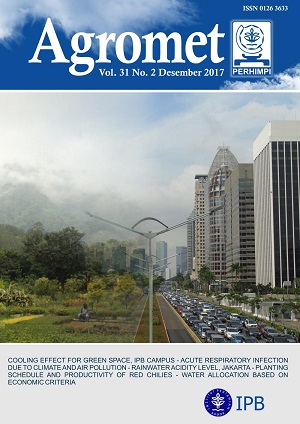Water Allocation Based on Economic Criteria Using Aquarius Model (A Case Study in Ambang-Brantas subbasin, Indonesia)
Abstract
The use of economic approach on water allocation are inclusively becoming integrated on water resource management. Competing among water users is expected to escalate due to increasing water demand despite of limited water availability. This research used economic approach aiming to optimize water allocation in Ambang-Brantas subbasin, Malang, and to calculate the total benefit for different sectors of allocated water. We distinguished two scenarios (2012–2015 and 2016–2035) to reflect the existing and the future water allocation. We modelled the water allocation with the Aquarious application. In this subbasin, three main sectors of water users were identified i.e. domestic, agriculture, and industries. The results showed that the agricultural sector was the highest water demand compared to other sectors. This finding was consistent both monthly and annually. Our findings revealed that industries sector show the maximum benefit per unit water used. Based on the scenario, either a decreasing water availability by 10% or an increasing water demand by 10% will decline the total benefit by 44%. If we increase the scenario to 20% it will reduce the total benefit until 71%. This modelling exercise using Aquarius application shows that the model is a promising tool for water resource management with integration of economic approach.

